淀川設(shè)計(jì):云間糧倉建筑改造“上海嘻谷藝術(shù)館”
▲ 嘻谷藝術(shù)館鳥瞰
DCDSAA淀川建筑事務(wù)所與“云間嘻谷”品牌合作,將坐落于中國上海云間糧倉西22棟歷史文化老建筑改造為全新的“嘻谷藝術(shù)館”空間;項(xiàng)目由DCDSAA淀川建筑事務(wù)所操刀設(shè)計(jì),基于場(chǎng)地環(huán)境及當(dāng)代藝術(shù)的屬性,摒除原始建筑多余的形體,以恰當(dāng)?shù)姆执纾瑯O簡(jiǎn)的手法,再造出通透性及關(guān)聯(lián)的幾何形態(tài),讓建筑與室內(nèi)融合在一起。?
DCDSAA Architecture Office cooperated with the brand "Valley of the Clouds" to transform 22 old historical and cultural buildings located in the west of the granary of the Clouds in Shanghai, China into a brand-new space of "Valley of the Clouds Art Museum"; The project was designed by DCDSAA Architecture Office. Based on the site environment and the attributes of contemporary art, the redundant forms of the original buildings were eliminated, and the permeability and related geometric shapes were recreated with proper discretion and minimalist methods, so that the buildings and interiors could be integrated together.?▲ 改造前原外觀(攝影 吳清山)
▲ 改造前原內(nèi)部(攝影 吳清山)
▲ 改造前原內(nèi)部(攝影吳清山)
這間上世紀(jì)五十年代至九十年代的糧食倉庫老建筑,總體園區(qū)由59棟老建筑組成,以前用作糧食倉儲(chǔ)、工廠車間、谷倉等,經(jīng)過全新規(guī)劃升級(jí)為云間糧食文創(chuàng)園;該建筑的概念設(shè)計(jì)很快就被確定,通過大規(guī)模翻新將其改造成了當(dāng)?shù)匚幕貥?biāo)性藝術(shù)展館,從而使其重復(fù)生機(jī)。This old grain warehouse building from 1950s to 1990s, the overall park consists of 59 old buildings, which were previously used for grain storage, factory workshop, barn, etc., and were upgraded to Yunjian Grain Creative Park through new planning; The conceptual design of the building was quickly determined, and it was transformed into a landmark art exhibition hall of local culture through large-scale renovation, thus making it live again.▲ 嘻谷藝術(shù)館外觀
?▲ 河畔夜景外觀
設(shè)計(jì)師在空間中設(shè)置了多個(gè)自由變化的幾何形態(tài)、內(nèi)部建筑具有7.5m的高度,整個(gè)上海獨(dú)一無二的雙頂連體結(jié)構(gòu),在視覺上將雙頂結(jié)構(gòu)空間統(tǒng)一為整體,也為藝術(shù)館增添力量感,激發(fā)著人們的探索欲。The designer has set up a number of freely changing geometric shapes in the space, and the interior building has a height of 7.5m The unique double-top conjoined structure in the whole of Shanghai visually unifies the space of the double-top structure, which also adds a sense of strength to the art museum and inspires people's desire for exploration.
▲ 入口展廊開放界面
?▲ 展廊與六邊形盒體
▲ 藝術(shù)連廊邊界從主入口步入展館,煥然一新的藝術(shù)場(chǎng)景;空間照明設(shè)計(jì)發(fā)揮了重要作用,營(yíng)造出動(dòng)感的視覺效果,吸引人們深入探索;展館櫥窗造型以藝術(shù)形態(tài)表達(dá)與建筑的巧妙呼應(yīng),櫥窗中以發(fā)光的線條勾勒出充滿動(dòng)感的視覺場(chǎng)景,體現(xiàn)設(shè)計(jì)層次感與通透性,力求吸引途徑此處的人們將目光從櫥窗轉(zhuǎn)入其它的不同區(qū)域。Stepping into the exhibition hall from the main entrance, a completely new artistic scene; Lighting design plays an important role in creating a dynamic visual effect and attracting people to explore deeply. The window shape of the exhibition hall echoes the ingenious architecture with artistic expression. The window outlines a dynamic visual scene with luminous lines, reflecting the design layering and permeability, and strives to attract people here to turn their eyes from the window to other different areas.
?▲ 場(chǎng)景展示與全通透長(zhǎng)廊
▲ 三角體落地窗形態(tài)在整個(gè)建筑改造過程中,設(shè)計(jì)師特別強(qiáng)調(diào)了生態(tài)和自然可持續(xù)建筑材料的使用,整個(gè)建筑群破舊的建筑結(jié)構(gòu)被從頭開始修復(fù),并按照當(dāng)?shù)乇Wo(hù)歷史痕跡的規(guī)范進(jìn)行翻修。外立面破舊的老紅磚嵌入新的語言,顯露出全新的整個(gè)建筑結(jié)構(gòu),為建筑表皮帶來新的可能性,詮釋對(duì)當(dāng)代材料的美學(xué)演繹,創(chuàng)造了一種新與舊的和諧。In the whole process of building renovation, the designer particularly emphasized the use of ecological and natural sustainable building materials, and the dilapidated building structure of the whole complex was repaired from scratch and renovated according to the local codes for protecting historical traces. The worn old red brick on the facade embeds new language, revealing a brand-new whole building structure, bringing new possibilities to the building skin, interpreting the aesthetic deduction of contemporary materials, and creating a kind of harmony between the new and the old.
▲ 新與舊在結(jié)構(gòu)層面上的對(duì)話
▲ 通透的室內(nèi)外界限
藝術(shù)館的空間具有個(gè)性和創(chuàng)造特征,按功能以不同比例切割成高低三部分,順應(yīng)有序分離的動(dòng)線,每個(gè)體塊自由進(jìn)出互相交融,空間感受與功能需求高效疊加;通過對(duì)一天各時(shí)段光與陰翳效果的細(xì)膩考量,于外墻落地玻璃的幾何造型,引光入室,光影翩躚,為有限的界域注入無盡的想象。The space of the art museum is characterized by individuality and creativity. It is divided into three parts, high and low, according to different proportions of functions, conforming to the moving lines of orderly separation. Each block is free to enter and exit and blend with each other, and the space feeling and functional requirements are superimposed efficiently. Through careful consideration of the effect of light and shade in different periods of the day, the geometric modeling of the floor-to-ceiling glass on the exterior wall will lead light into the room, and the light and shadow will flutter, injecting endless imagination into the limited boundary.
▲ 紅磚門廊與內(nèi)景
▲ 三角體櫥窗與展廊
地面細(xì)石子與青石板材質(zhì)的銜接,高低錯(cuò)落的老木板形態(tài)肌理,塑造出內(nèi)部的靈動(dòng)性,給予每一件藝術(shù)作品以最佳觀覽效果,巨大的體塊構(gòu)筑了藝術(shù)性與雕塑感,又充滿了趣味性,整體賦予了藝術(shù)最真實(shí)的情緒傳遞。The connection between the fine stones on the ground and the bluestone material, and the texture of the old wooden boards strewn at random, shape the internal agility, and give the best viewing effect to every artistic work. The huge blocks build the artistic and sculptural sense, and are full of fun, which endows the art with the truest emotional transmission as a whole.
▲ 紅磚柱中的紙花雕塑
?▲ 雙頂連體結(jié)構(gòu)下六邊形盒
▲ 雕塑與內(nèi)景局部在空間內(nèi),我們置入了4個(gè)相同規(guī)格的六邊形單體結(jié)構(gòu),如懸浮在地面上的玻璃box,打破原有空間界限的box結(jié)構(gòu),我們運(yùn)用同一種元素但不同的設(shè)計(jì)手法貫穿整個(gè)空間使其連貫且統(tǒng)一;在燈光的選擇方面,這次我們采用大量線條燈來裝飾點(diǎn)綴,地面采用了大面積燈帶光源照明,使室內(nèi)光源統(tǒng)一均勻,更加激進(jìn)而立體。In the space, we put in four hexagonal monomer structures with the same specifications, such as the glass box suspended on the ground and the box structure that breaks the original space boundary. We use the same element but different design techniques throughout the whole space to make it coherent and unified; In the choice of lighting, this time we used a large number of line lights to decorate and decorate, and a large area of lights with light sources were used on the ground to make the indoor light sources uniform, more radical and three-dimensional.
?▲ 藝術(shù)館內(nèi)生長(zhǎng)的紙花雕塑
▲ 垂吊中浪漫的藝術(shù)紙花展陳設(shè)計(jì)層面,設(shè)計(jì)師將“自然共融”的理念具象詮釋,以三角異形落地玻璃“櫥窗”為概念完成前端開口,增強(qiáng)空間內(nèi)外的互動(dòng)關(guān)系;館外,可直觀感受空間的藝術(shù)氛圍,如櫥窗;館內(nèi),局部場(chǎng)景與燈光視覺界面構(gòu)成的詩意,形成了空間連續(xù)性的感覺。At the exhibition design level, the designer interprets the concept of "natural communion" figuratively, and completes the front opening with the concept of triangular shaped floor-to-ceiling glass "window" to enhance the interaction between inside and outside the space; Outside the museum, you can intuitively feel the artistic atmosphere of the space, such as the window; In the museum, the poetry of the visual interface between local scenes and lighting forms a sense of spatial continuity.
?▲ 圓形展臺(tái)盛開的藝術(shù)荷花
▲ 紙花雕塑與觀景平臺(tái)在空間中我們運(yùn)用了多種材料,不同質(zhì)感,拼接,重疊,碰撞,重組,但大部分材料的選取是基于空間的敘事性氛圍,也需要控制整體體驗(yàn)感的節(jié)奏變化;這種變化會(huì)讓空間氛圍微妙具有細(xì)節(jié),同時(shí)又不會(huì)搶奪主體的吸引程度;而在需要重點(diǎn)表達(dá)的空間區(qū)域,我們會(huì)運(yùn)用到跳出整體感的材質(zhì),增強(qiáng)空間的沖突感層次感。
In the space, we use a variety of materials with different textures, splicing, overlapping, collision and reorganization, but the selection of most materials is based on the narrative atmosphere of the space, and it is also necessary to control the rhythm change of the overall experience. This change will make the space atmosphere subtle and detailed, while not robbing the attraction of the main body; In the space areas that need to be emphasized, we will use materials that jump out of the sense of wholeness to enhance the sense of conflict in the space.
▲ 漂浮的休閑觀景區(qū)
▲ 休閑觀景局部
▲ 展廊中的光影
我們通過遺留或者過去的痕跡來表達(dá)作品,所以決定保留部分它原有的結(jié)構(gòu),墻面,我們相信這些舊的結(jié)構(gòu)痕跡與新設(shè)計(jì)的碰撞融合將會(huì)呈現(xiàn)給我們完全不一樣的體驗(yàn)感,以此來制造空間的沖突感與戲劇性;在科技感十足的燈光點(diǎn)綴下,銹鋼板,裸露的紅磚,質(zhì)樸的材料,肌理的紋路,顯得更酷,更開放,更未來。We express our works through the traces left over or past, so we decided to keep some of its original structures and walls. We believe that the collision and fusion of these old structural traces and new designs will give us a completely different sense of experience, so as to create a sense of conflict and drama in space; Under the lighting with full sense of science and technology, rusty steel plates, bare red bricks, plain materials and textured lines look cooler, more open and more promising.
▲ 垂落紙花裝置藝術(shù)與空間倒影
?▲ 地面生長(zhǎng)的藝術(shù)紙花
▲ 屋頂與內(nèi)景局部
?▲ 懸浮六邊形體與屋頂結(jié)構(gòu)
▲ 屋頂下的自由廊道
▲ 紙花雕塑意境
▲ 藝術(shù)展廊局部空間
▲ 總平面圖
▲ 平面設(shè)計(jì)圖
▲ 南立面圖
▲ 剖面圖
項(xiàng)目簡(jiǎn)介
Project Introduction
項(xiàng)目名稱:(云間糧倉建筑改造“上海嘻谷藝術(shù)館”)?
Project Name: (Cloud Granary Building Reconstruction "Shanghai Xigu Art Museum")
項(xiàng)目地點(diǎn):中國·上海·松江
Project Location: Songjiang, Shanghai, China
建筑面積:1200平方米
Building Area: 1200 square meters
項(xiàng)目類型:展廳/裝置藝術(shù)/紙花雕塑
Type: Exhibition Hall/Installation Art/Paper Flower Sculpture
項(xiàng)目業(yè)主:炯瑪實(shí)業(yè)(上海)有限公司
Owner: Jiongma Industry (Shanghai) Co., Ltd.
建筑設(shè)計(jì):DCDSAA淀川建筑事務(wù)所
Architecture Design: DCDSAA Architecture Office
室內(nèi)設(shè)計(jì):DCDSAA淀川建筑事務(wù)所
Interior Design: DCDSAA Architecture Office
公司網(wǎng)站:www.dcdstudio.cn
Company Website:www.dcdstudio.cn
主持建筑師:王皓
Host Architect: Wang Hao
設(shè)計(jì)團(tuán)隊(duì):袁鄭亮、唐超、顏丙坤
Design Team: Yuan Zhengliang, Tang Chao, Yan Bingkun
設(shè)計(jì)時(shí)間:2022年1月
Design Time: January, 2022
建成時(shí)間:2022年7月
Completed Time: July, 2022
施工單位:上海淀川建筑設(shè)計(jì)有限公司
Construction Unit: Shanghai DCDSAA Architectural Design Co., Ltd.
主要材料:石材、銹鋼板、老木板、玻璃、素水泥、肌理漆
Main materials: stone material, rusty steel plate, old wooden board, glass, plain cement, texture paint
項(xiàng)目攝影:吳清山?
Project Photographer: Wu Qingshan



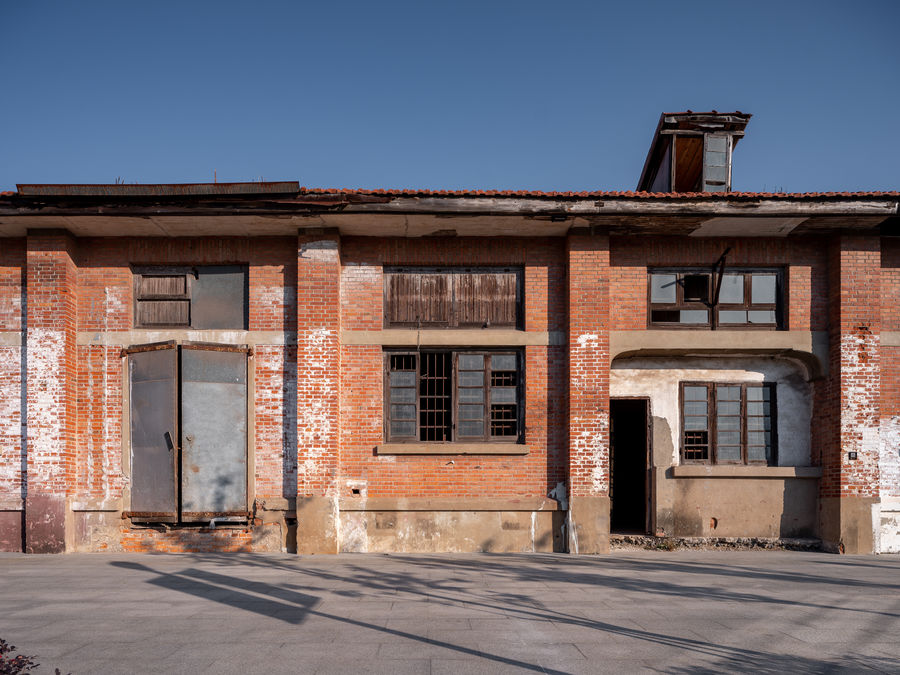
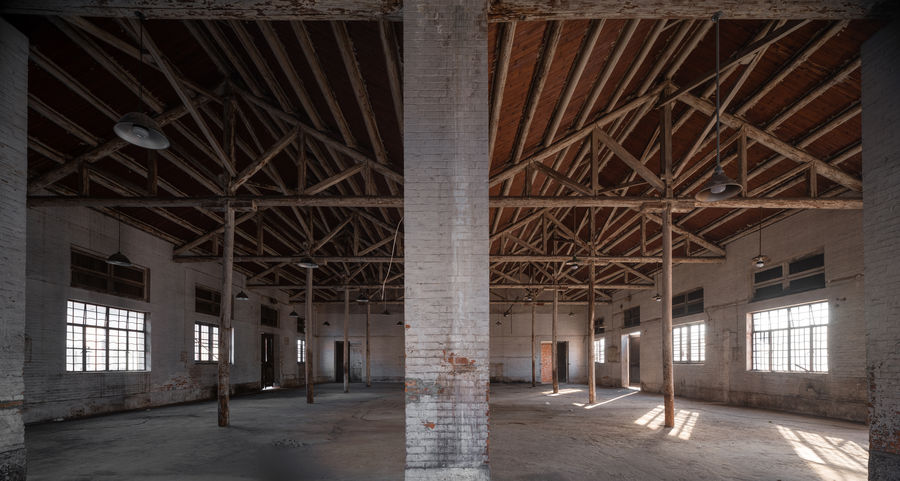
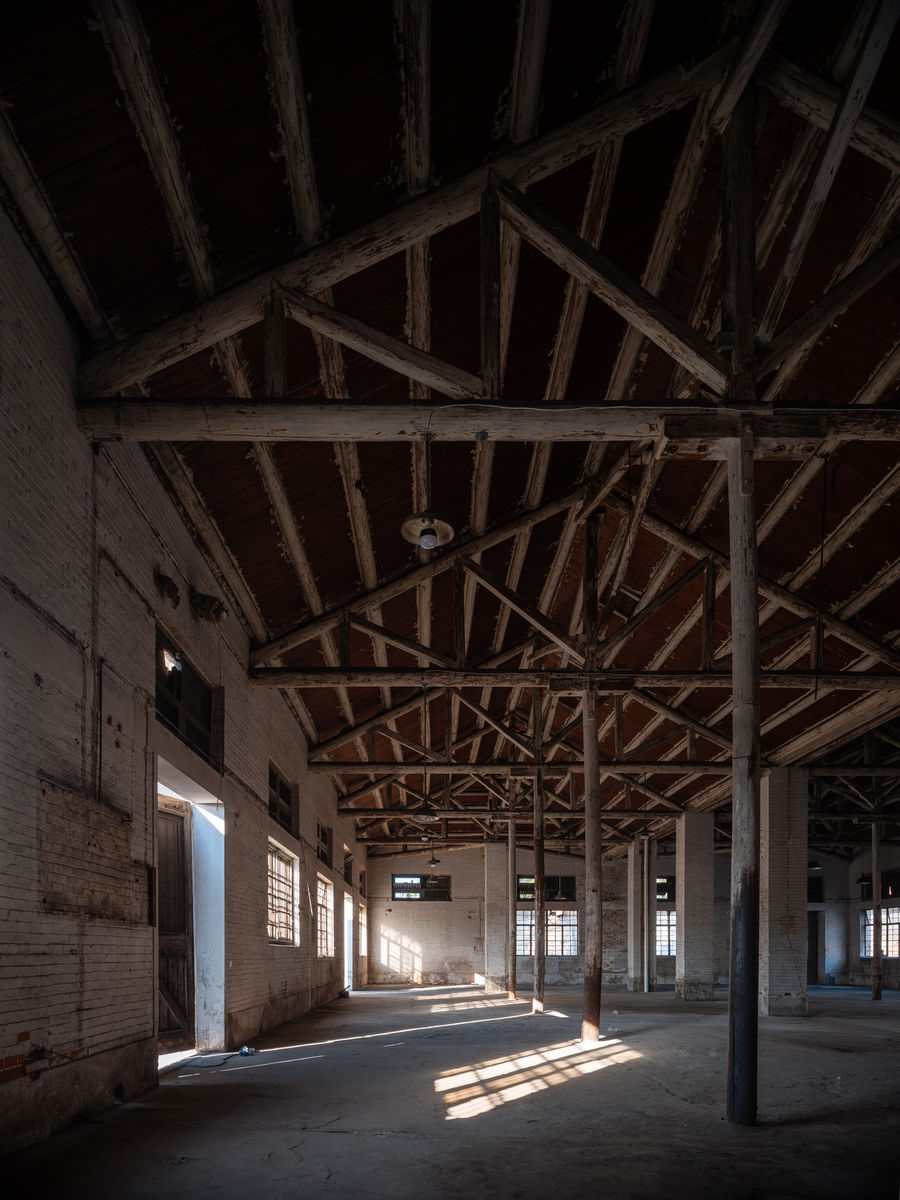
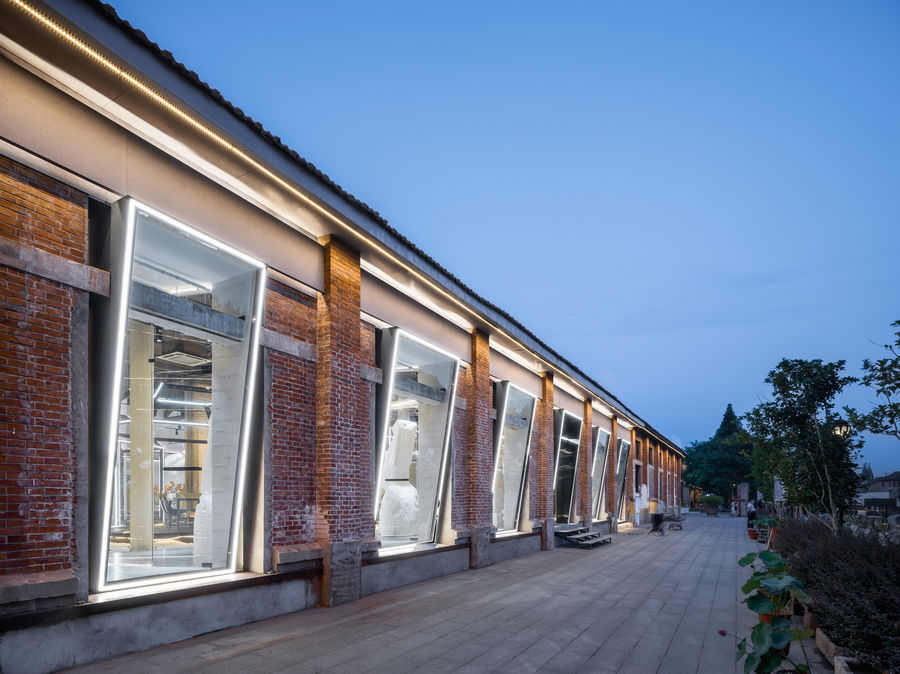
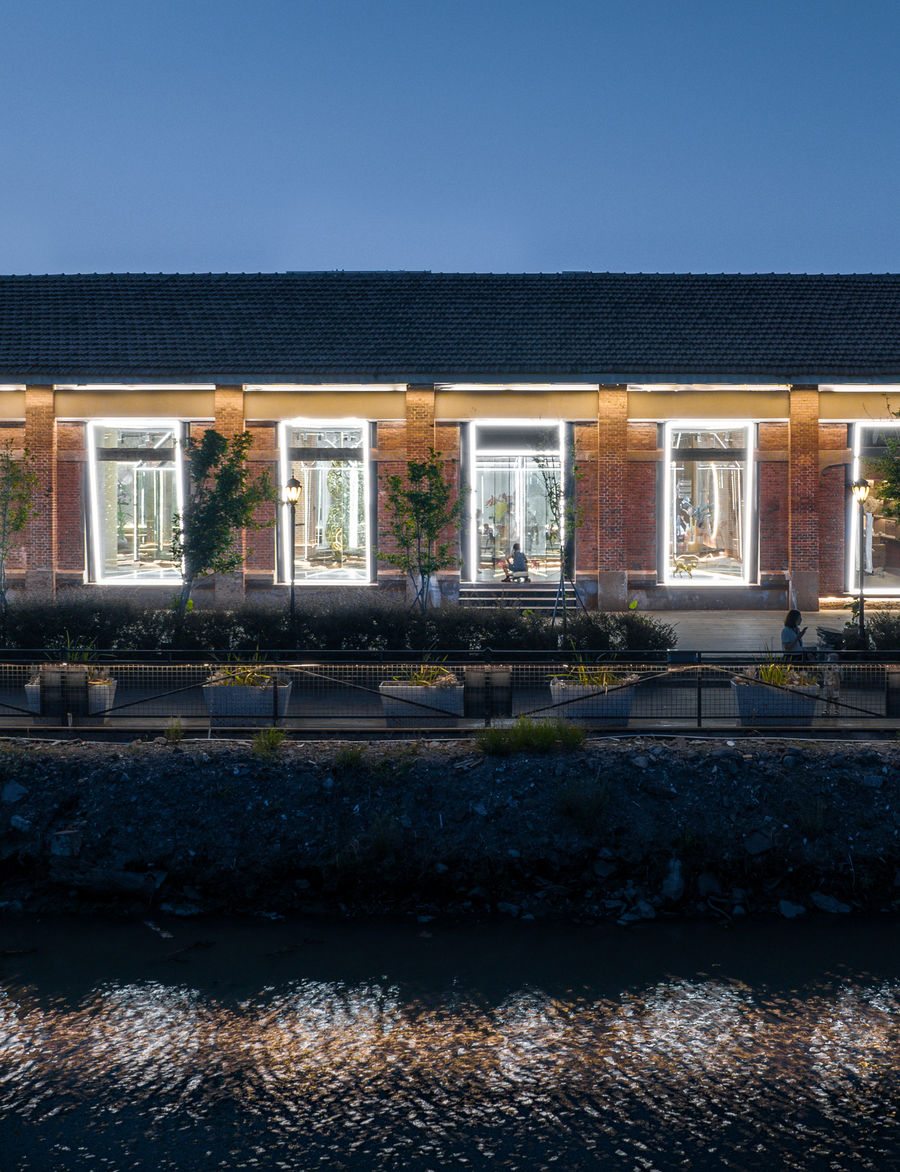
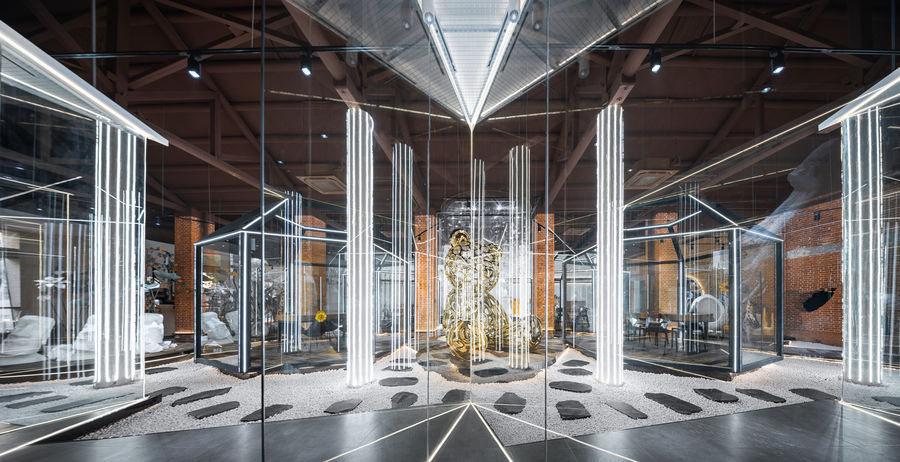
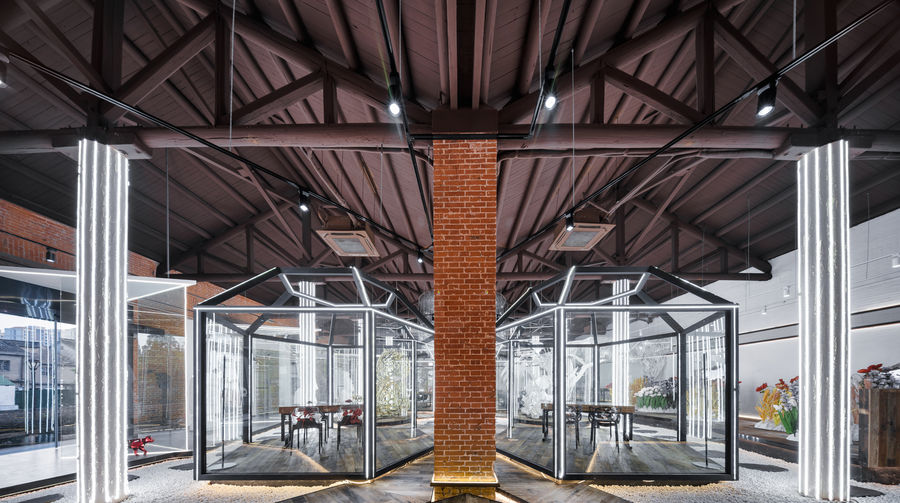

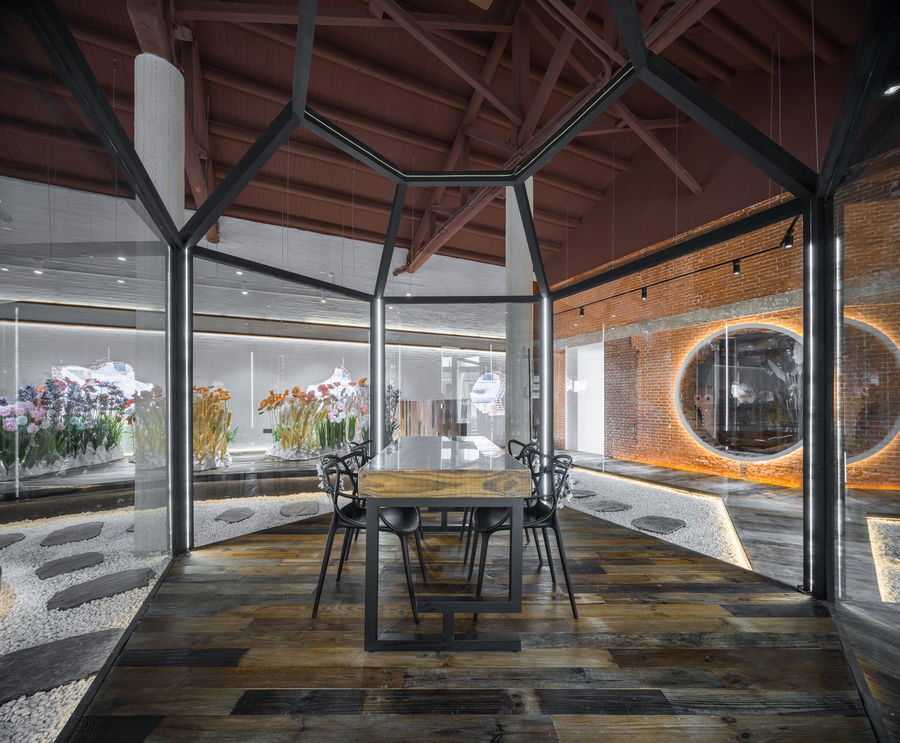
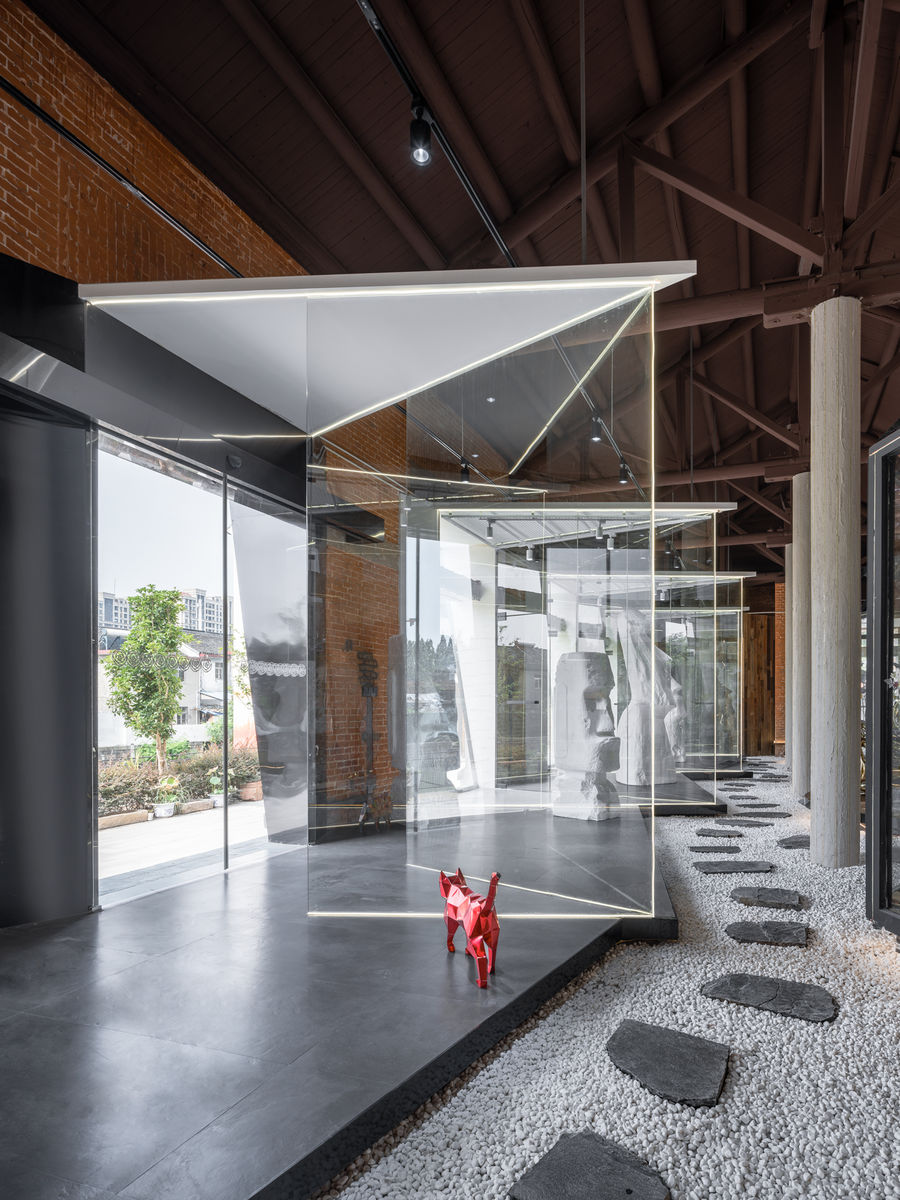
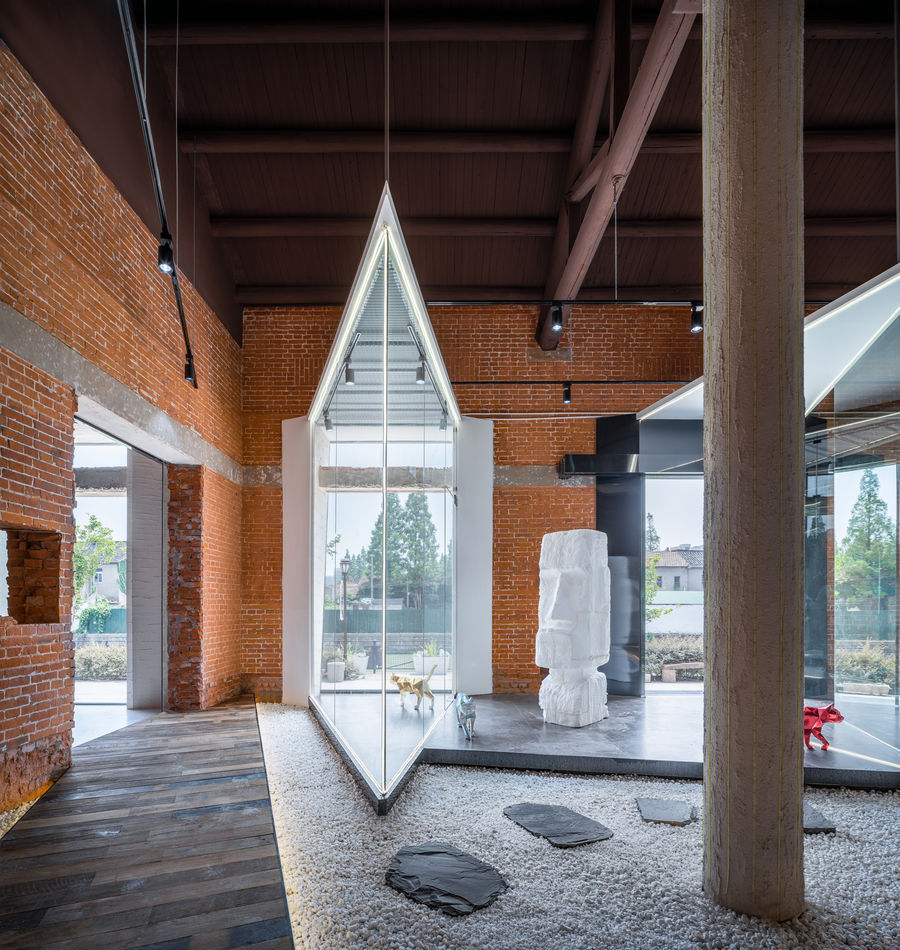

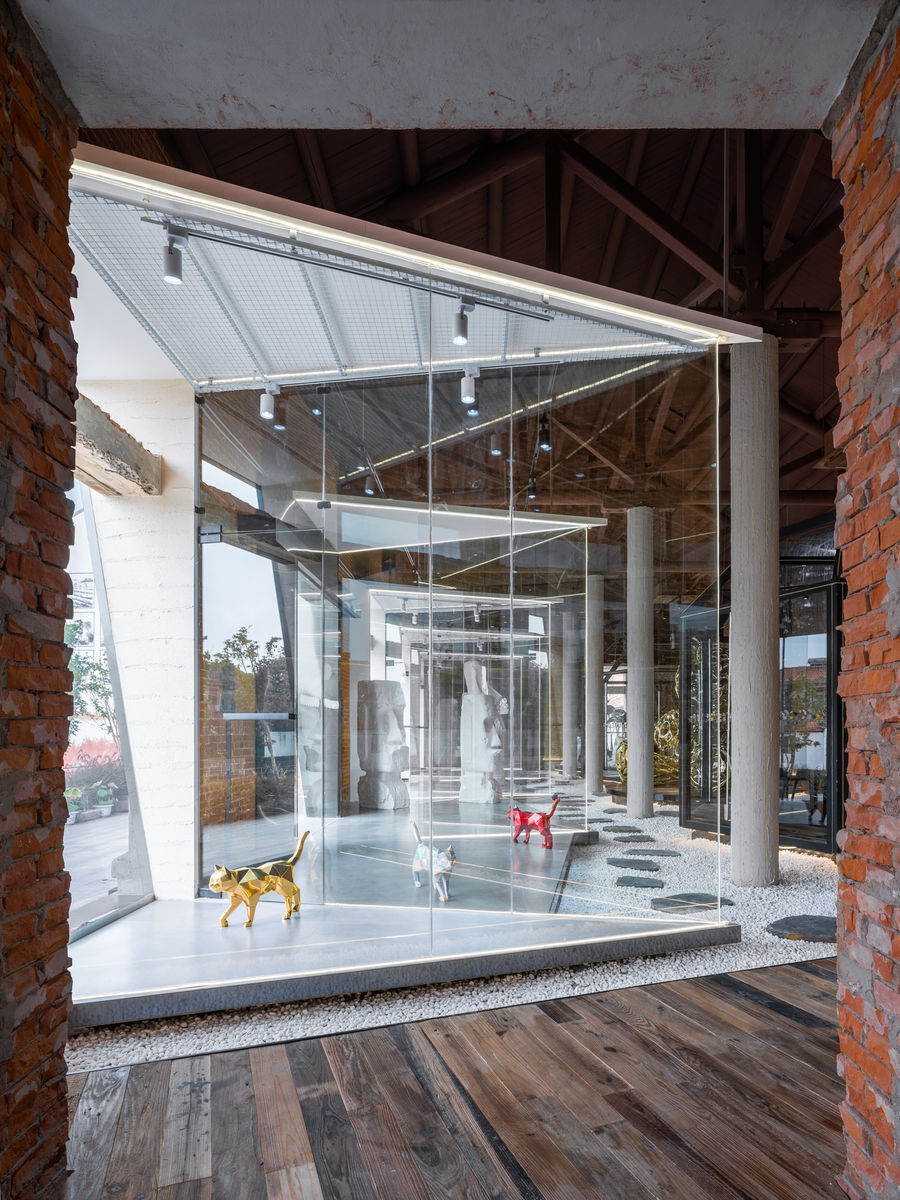

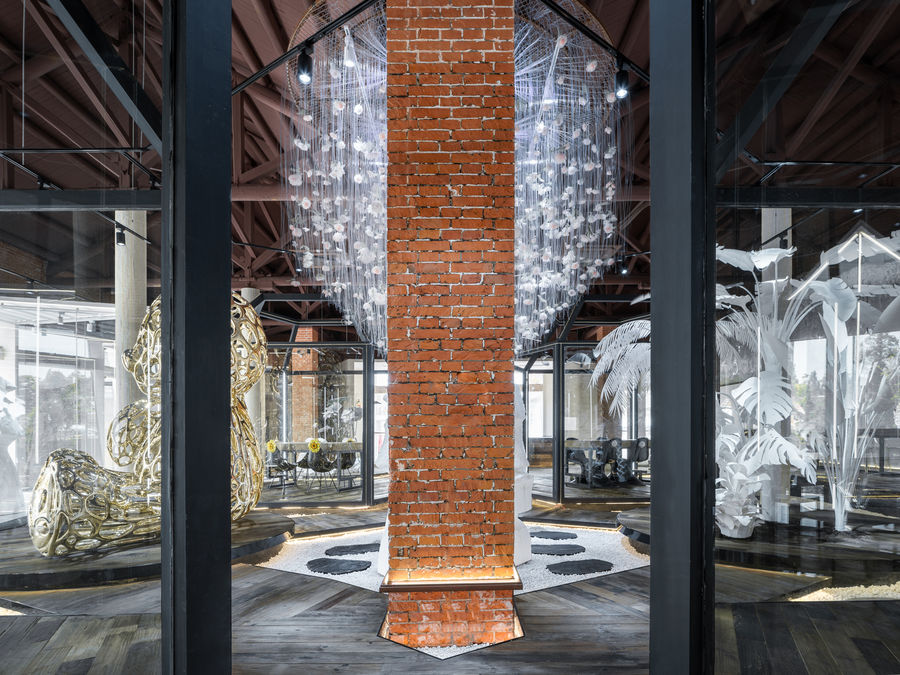

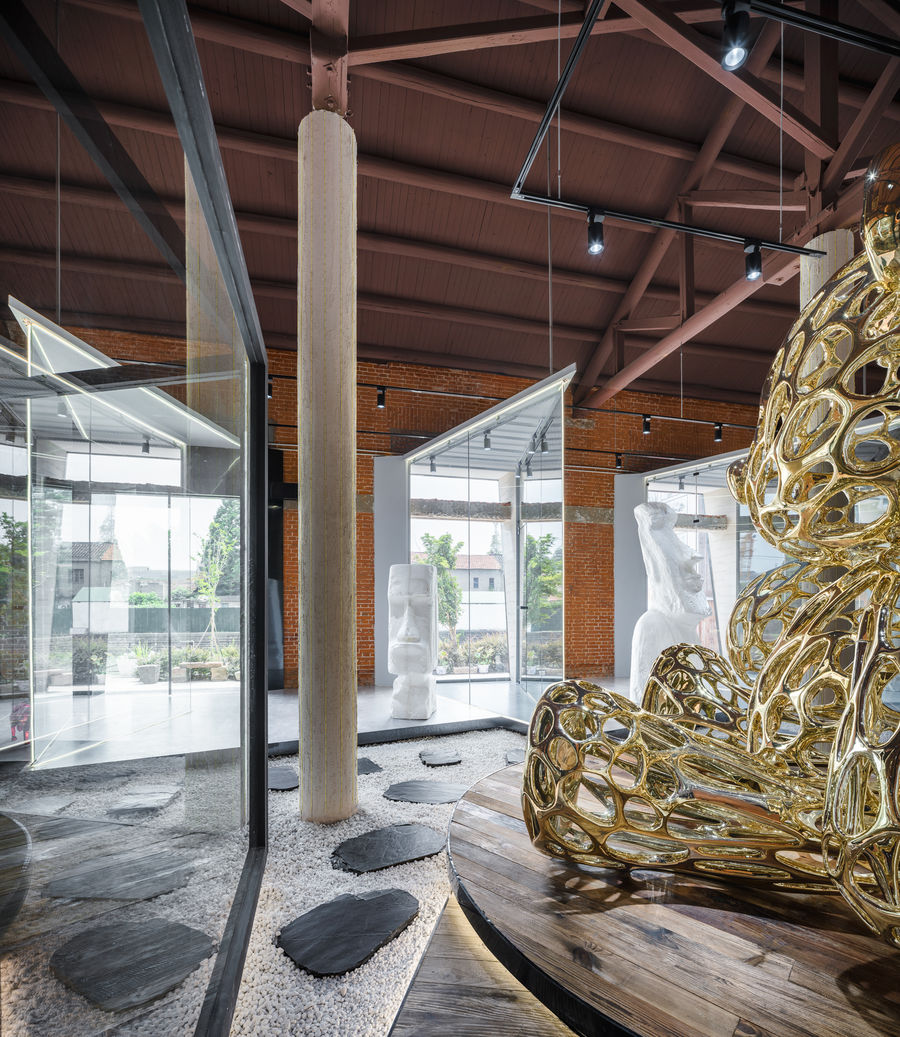

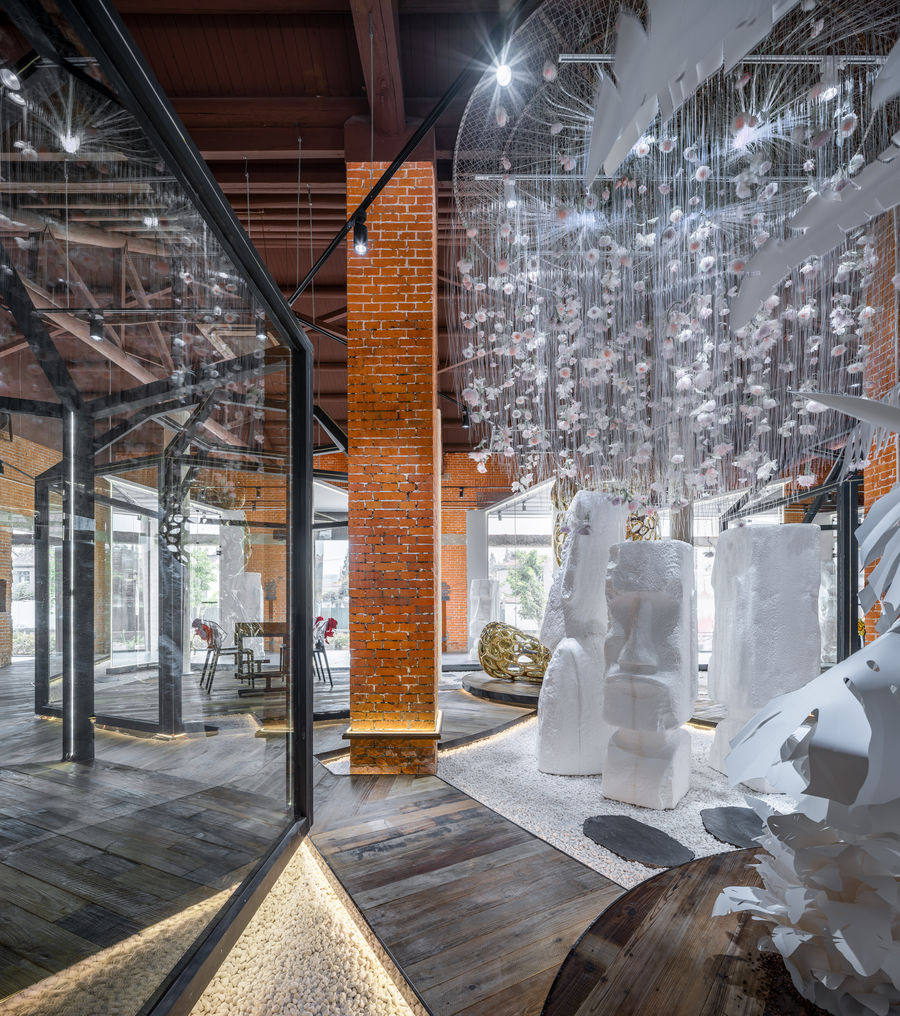
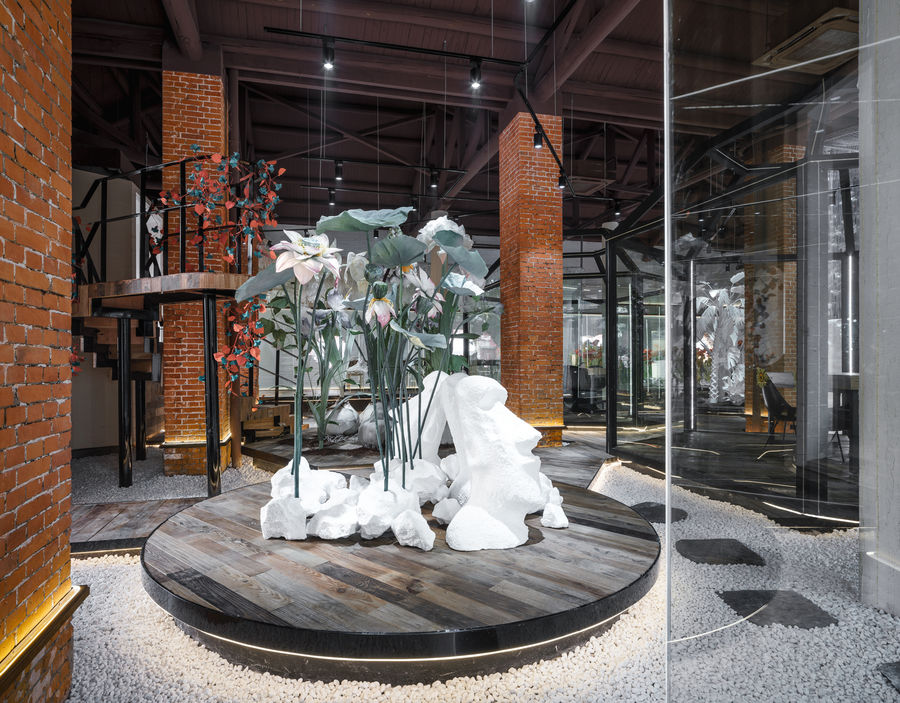
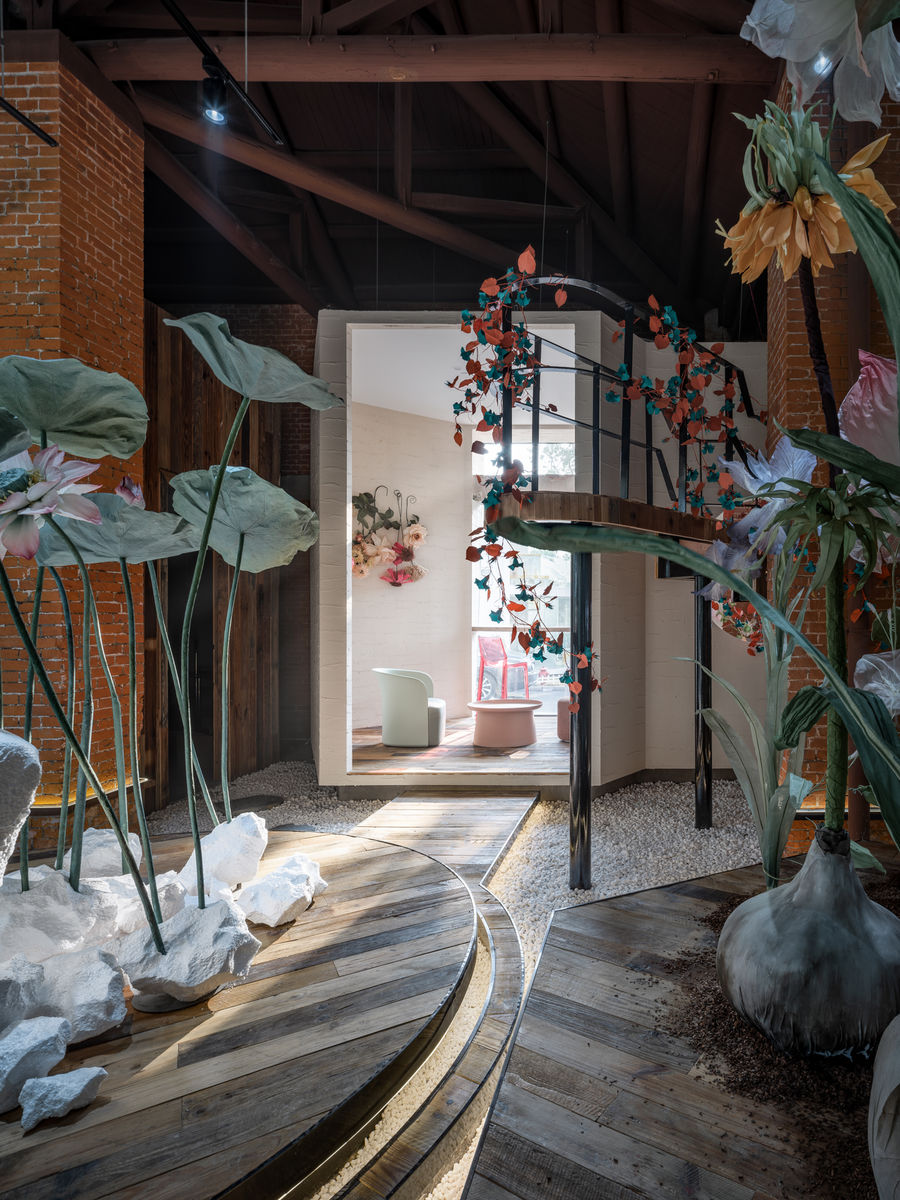
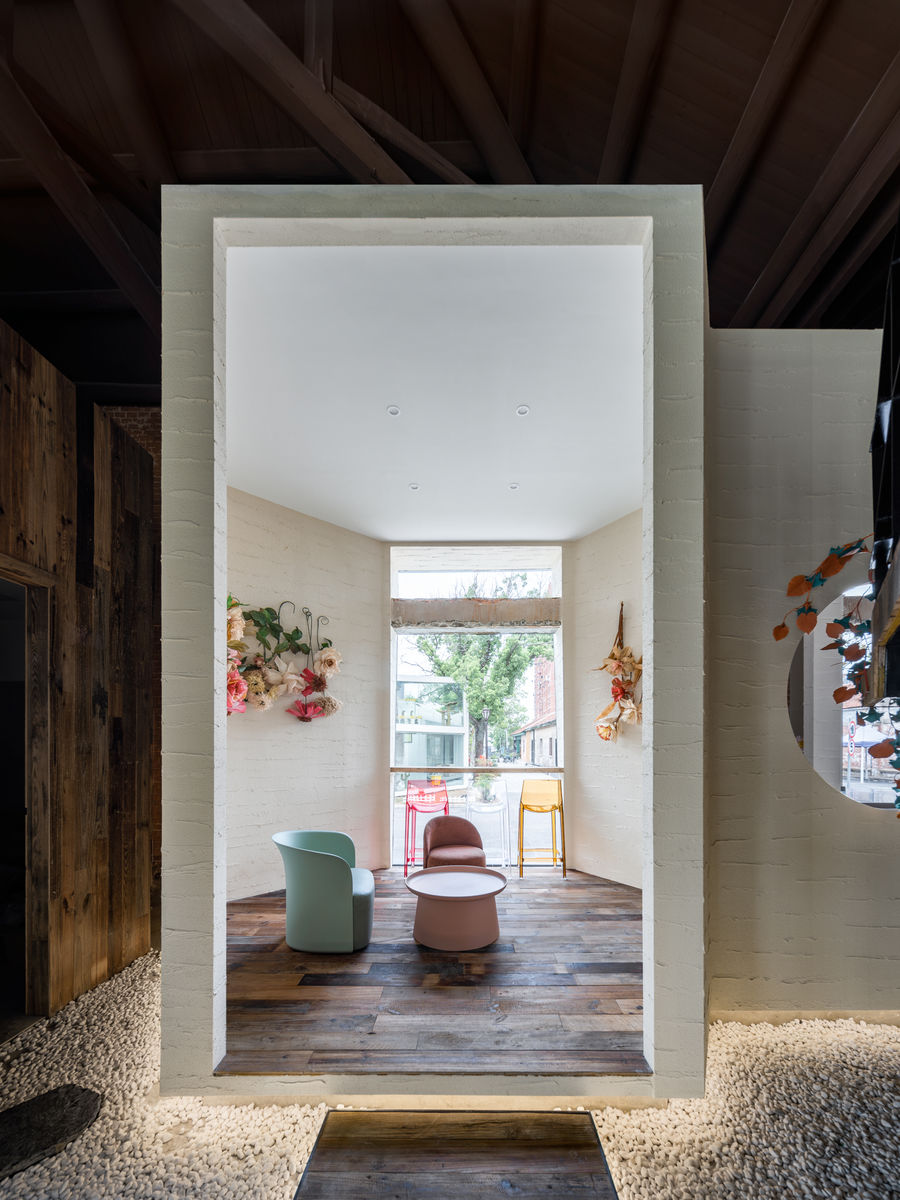
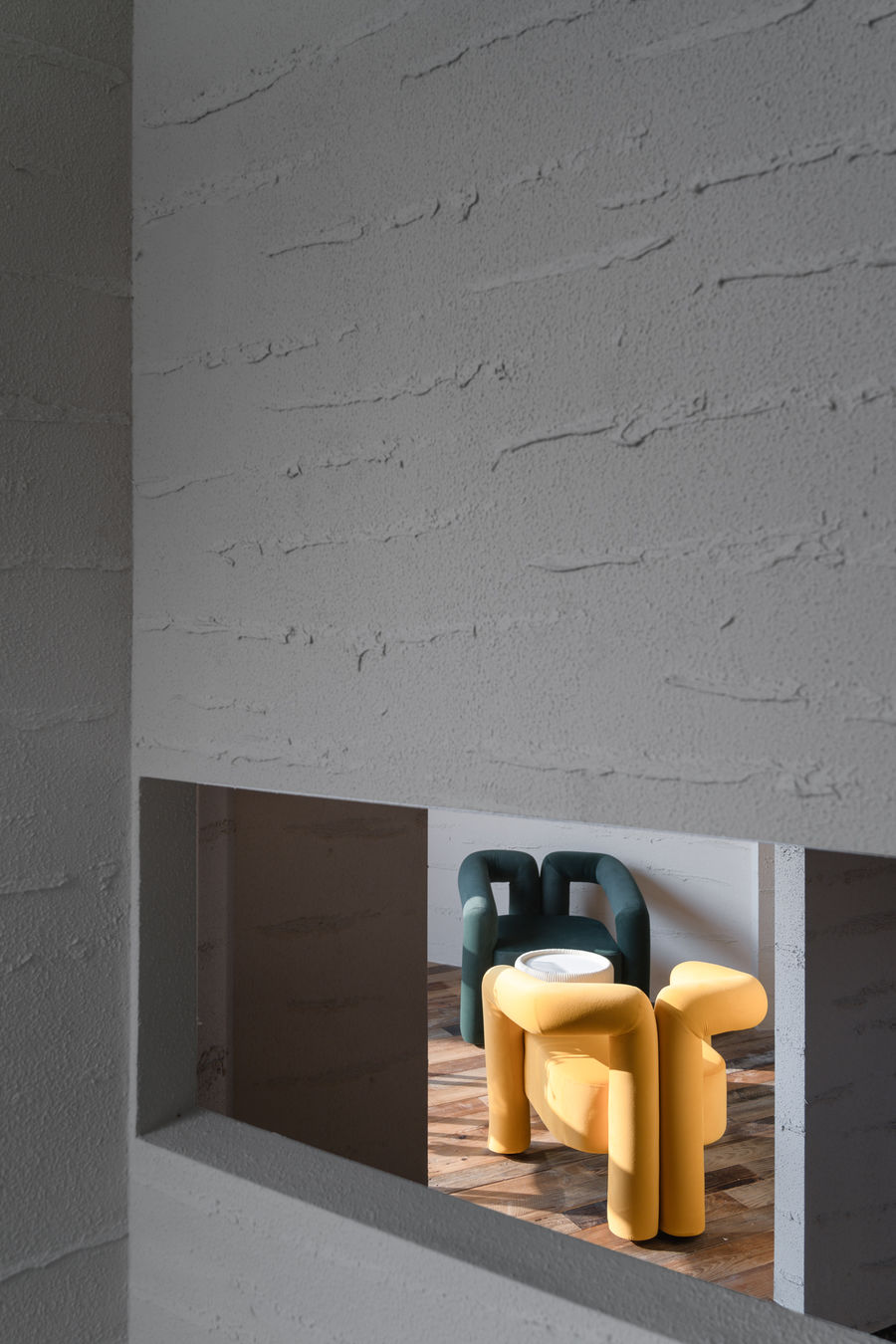
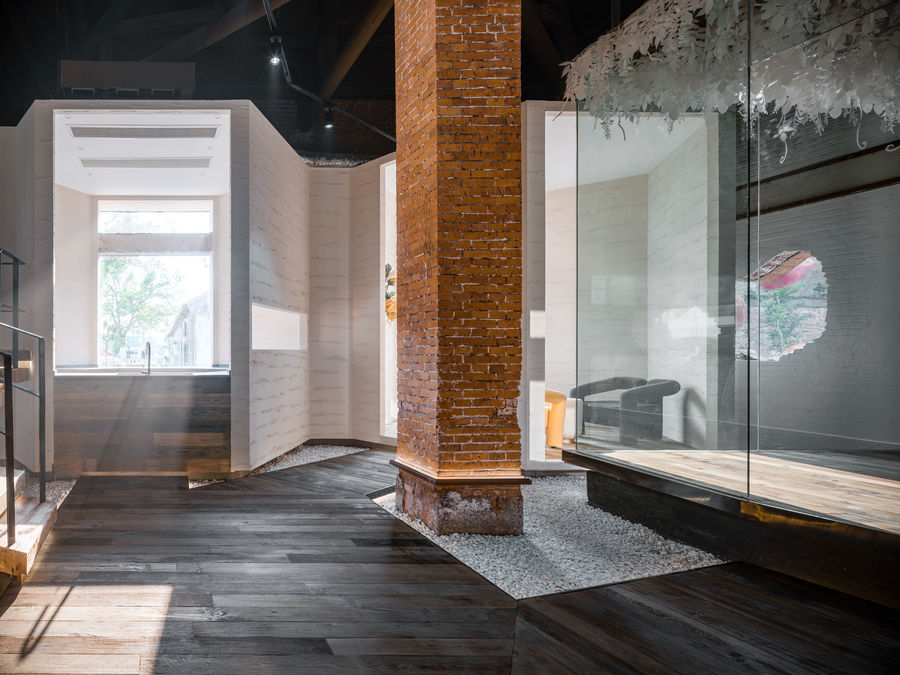

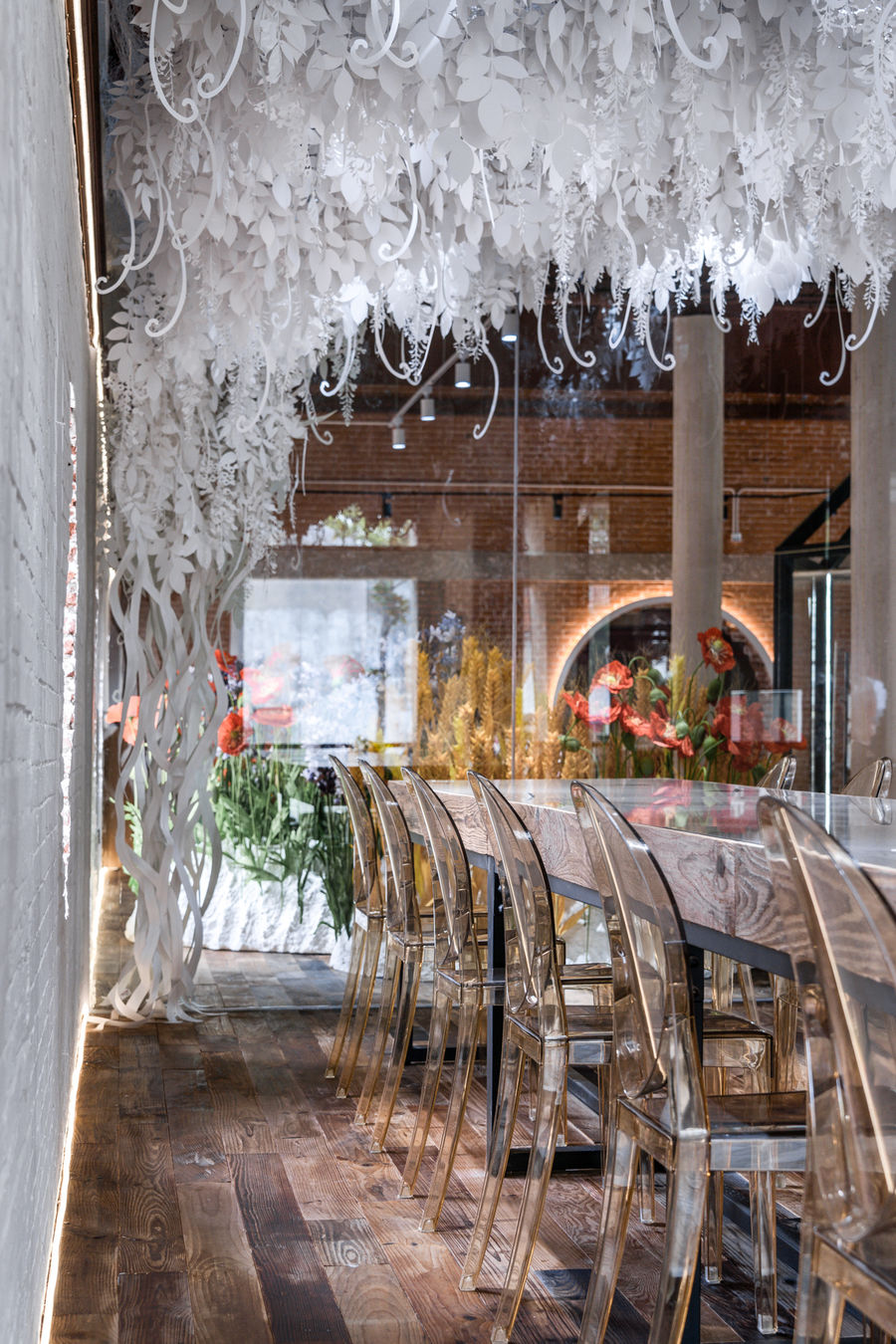
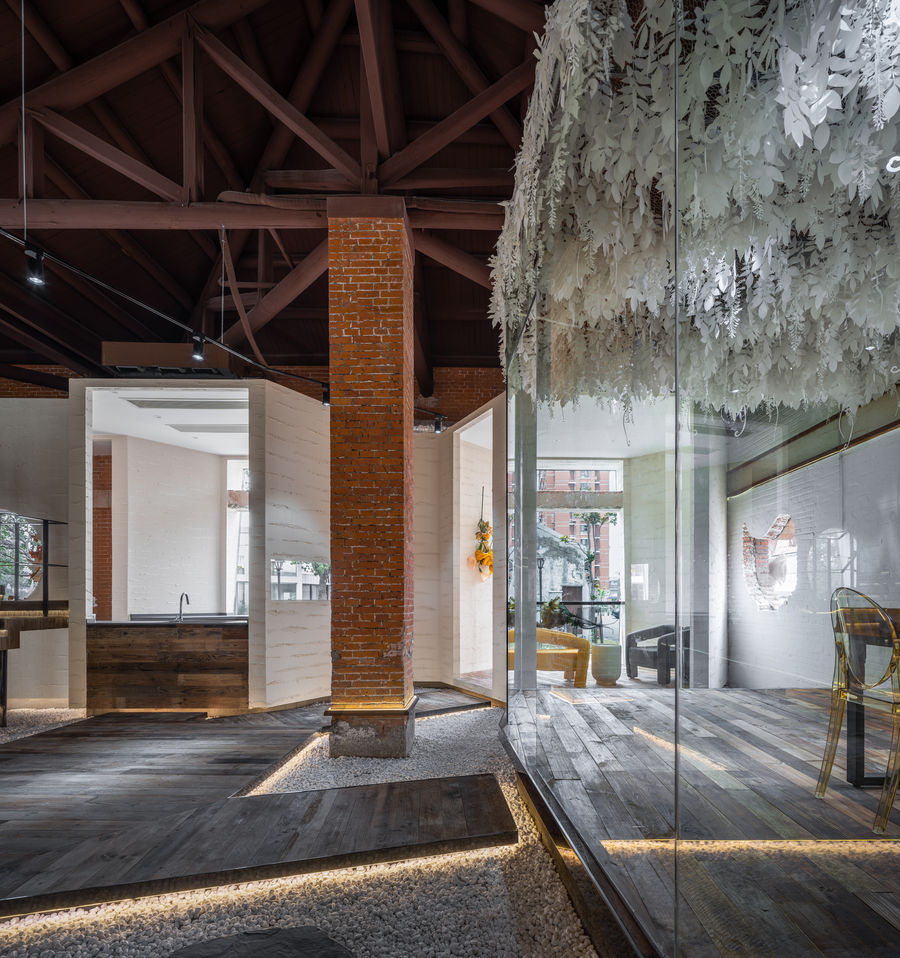



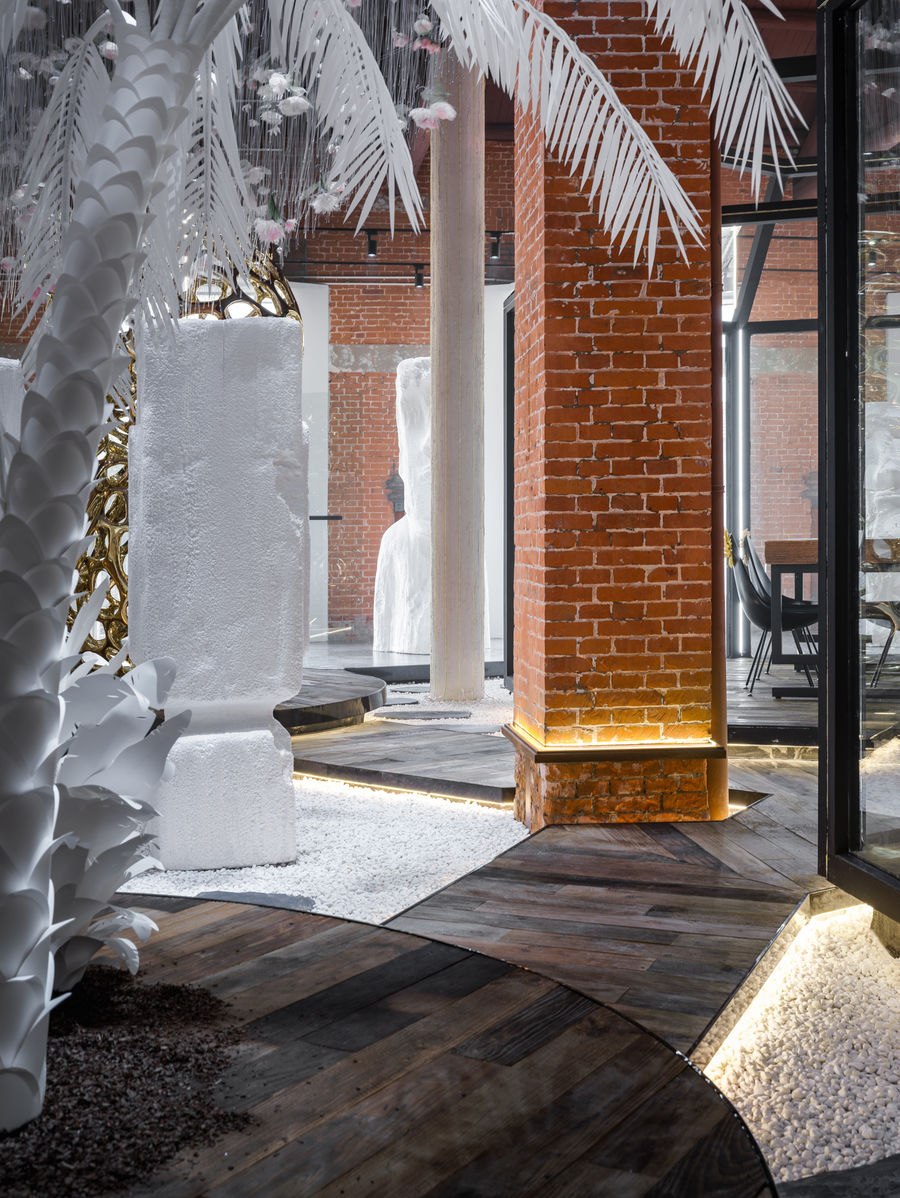

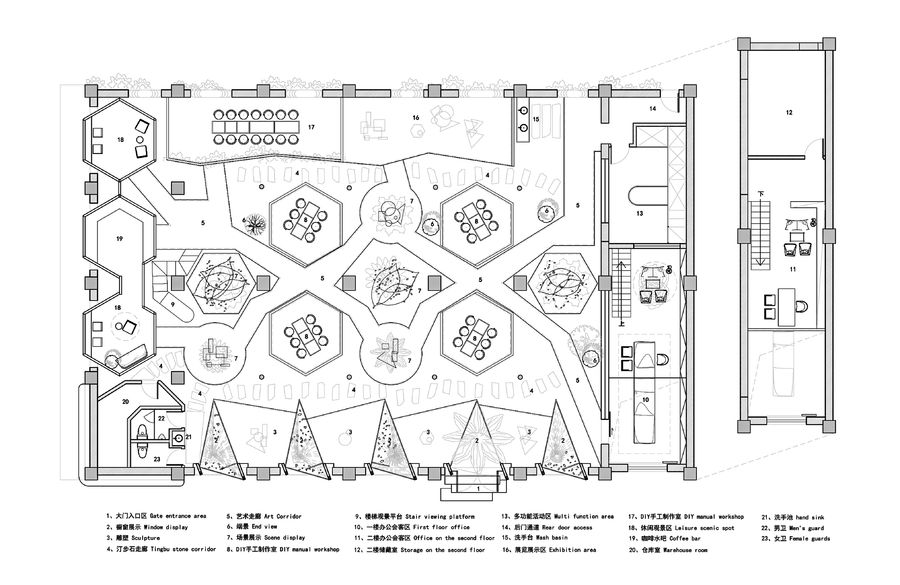
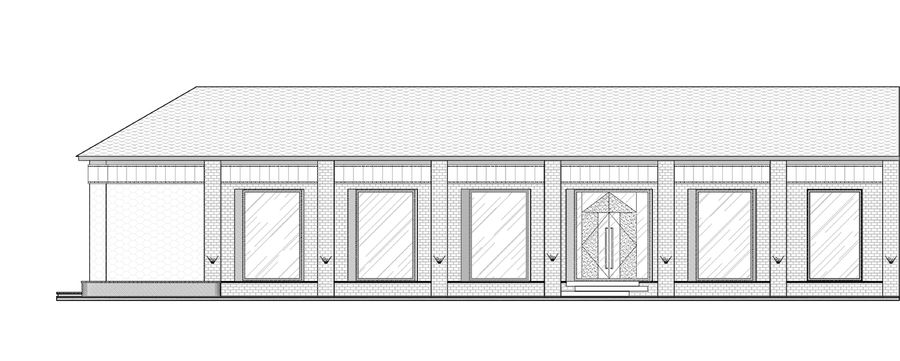

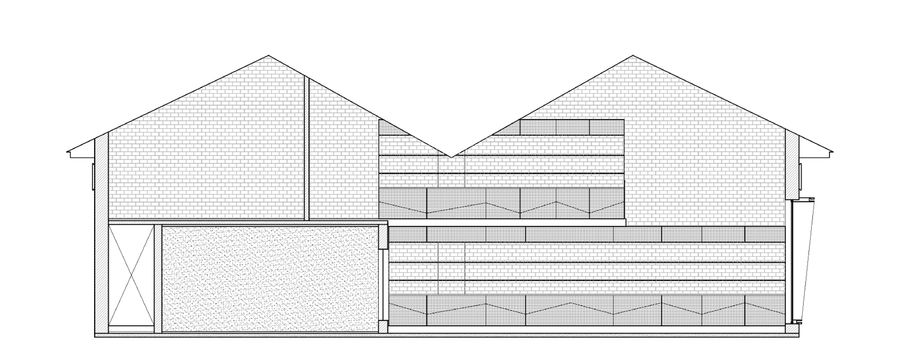



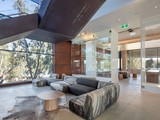







評(píng)論(0)